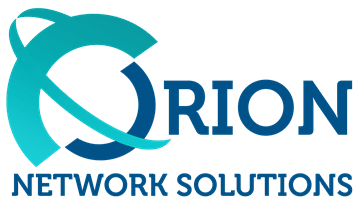A Deep Dive Into IT Cost Optimization
IT cost optimization is a strategic process employed by businesses to lower unnecessary spending in their IT budgets, while still facilitating investment in new technologies that can accelerate business growth. But what exactly is IT cost optimization, and why should your business pay attention to it? In this comprehensive article, we will explore the nitty-gritty of IT cost optimization and reveal why it’s become a critical process for businesses of all sizes.
Exploring IT Cost Optimization: What Does it Mean?
IT cost optimization refers to an ongoing process aimed at reducing wasteful expenditure, underutilization, or low-return areas within your IT budget. It’s about strategically cutting IT costs and reallocating those savings towards fresh technological investments that can spur business growth or enhance profit margins.
Global research giant Gartner describes cost optimization as marrying service delivery with optimal customer experience at the right price. Amazon Web Services (AWS) emphasizes the importance of fully utilizing all resources, achieving the desired outcome at the lowest possible price point, and continually refining workloads to optimize savings and returns. This, AWS defines, is the essence of cost optimization.
In the AWS Well-Architected Framework, the cost optimization pillar signifies building and operating cost-conscious workloads to achieve desired business outcomes while minimizing costs and maximizing returns. Microsoft Azure sees cost optimization as a means to lower unnecessary expenses and enhance operational efficiencies.
But what about businesses that operate in the cloud? This is where cloud cost optimization comes into play.

Understanding Cloud Cost Optimization
Cloud cost optimization reduces cloud waste and enables optimal cloud operations, irrespective of the scale. It leverages strategies, techniques, best practices, and tools that curtail cloud costs while maximizing the business value derived from the cloud.
The practice involves identifying and decreasing mismanaged or excess resources, procuring more resources for less by availing discounts, and rightsizing computing resources according to specific workload and application requirements to reduce cloud waste.
Cost optimization is a persistent practice that ensures operational efficiency at optimal costs. It’s aimed at eliminating waste to accrue savings, which can then be channeled toward growth-oriented initiatives.
Cost Optimization vs. Cost Reduction: Understanding the Difference
Though they may sound synonymous, cost optimization and reduction are fundamentally different. Cost reduction is about cutting costs to decrease your cloud bill, often irrespective of the consequences. In contrast, cost optimization focuses on minimizing unnecessary expenses to reinvest the savings into areas that promise higher returns on investment.
Reducing IT usage simply to lower your cloud bill can compromise your system’s performance, hamper engineering innovation, and impede overall business growth. Conversely, cost optimization techniques aim to identify ways to leverage economies of scale, thereby protecting or improving margins on each customer you onboard.
Thus, while cost reduction may provide short-term gains, cost optimization is a long-term, continuous process that seeks to reduce unnecessary spending and maximize investment in areas that yield the greatest return.
The Increasing Importance of Cost Optimization
As organizations become more technologically reliant, cost optimization is critical, helping control costs and reduce waste in cloud-based operations and physical data centers. It provides a route to constructing a modern, scalable infrastructure that satisfies your workload’s demands without exceeding your budget.
Several studies highlight the increasing significance of cost optimization. Gartner predicts cloud spending to rise to almost $600 billion in 2023. By 2026, public cloud spending could account for over 45% of all enterprise IT spending, a significant increase from less than 17% in August 2021.
Meanwhile, IDC forecasts that cloud spending will continue to grow strongly through 2025. Simultaneously, cloud waste has also seen a rise, from 30% in 2020 to 32% in 2021, as per a cloud study released in Q1 2022.
With these studies indicating that IT costs are a major expense center, cost optimization becomes essential to ensure you’re not squandering up to a third of your IT budget.
Delving into Cost Optimization: Techniques and Practices
Cost optimization techniques can help minimize computing costs without impacting your system’s performance or engineering velocity. These strategies range from modernizing legacy systems, utilizing cloud-native design, rightsizing resources, taking advantage of cloud provider discounts, and terminating unused resources, to enabling cost anomaly detection.
Furthermore, developing a cost-conscious culture can be a long-term strategy to inspire your team to devise innovative ways to cut costs without compromising performance.
Pillars of Cost Optimization
The four key principles of cost optimization, according to AWS, are:
- Rightsizing resources
- Using Reserved Instances where most suitable
- Improving elasticity
- Continuous measurement, monitoring, and improvement
These pillars apply across virtually all environments, regardless of the workload or architecture.
Cost Optimization Best Practices to Implement
To maximize business value without incurring additional costs, consider implementing these cost optimization best practices:
- Digitize IT and business operations to support cost optimization automation.
- Ensure the best pricing and terms for all business purchases.
- Enable continuous cost monitoring for improved cloud cost visibility.
- Utilize cloud cost monitoring best practices to detect and fix cost anomalies promptly.
- Identify areas where your organization is wasting cloud resources.
- Develop and enforce cost governance policies.
- Rightsize AWS or Azure cloud resources to avoid over-provisioning or under-provisioning.
- Explore hidden AWS and Azure cost savings opportunities.
The Future of Cost Optimization: Cloud Cost Intelligence
Cloud cost intelligence platforms allow you to understand exactly who, what, and why your cloud costs change by breaking down your total cloud bill into unit cost insights. These platforms enable you to collect, view, and share valuable insights from tagged, untagged and shared resources in multi-tenant environments.
In conclusion, IT cost optimization is not just about cutting costs. It’s a strategic and continuous process that enables businesses to eliminate waste, gain savings, and direct those savings toward growth-oriented initiatives. Mastering cost optimization in the ever-evolving digital landscape can give your business a competitive edge.










